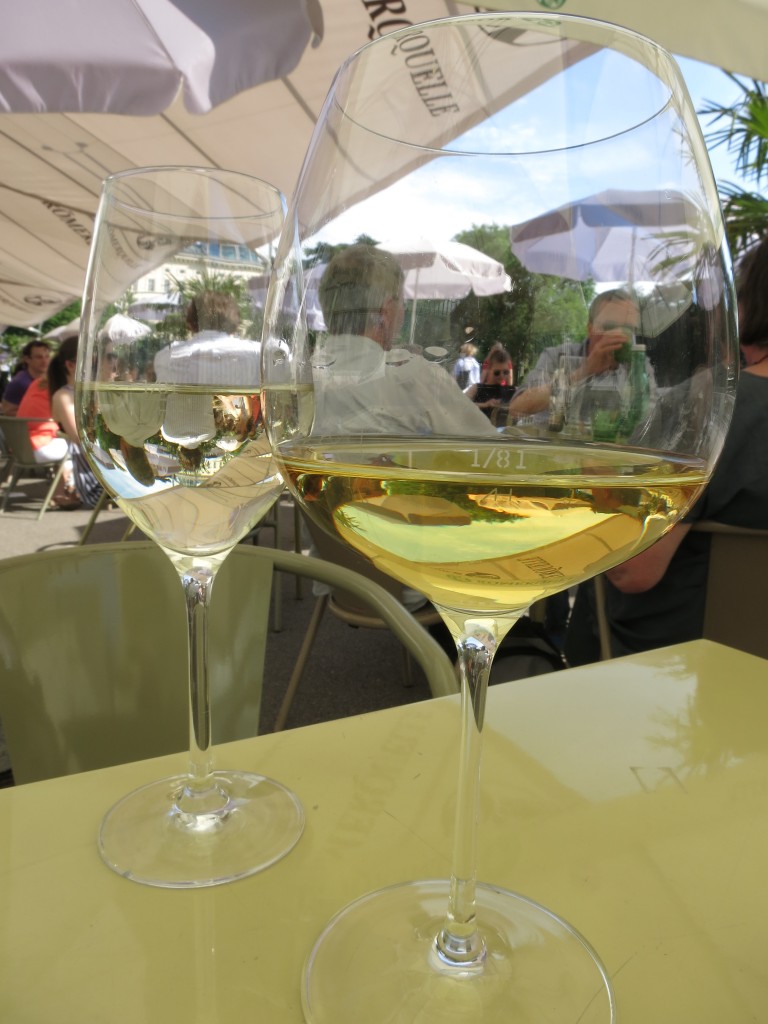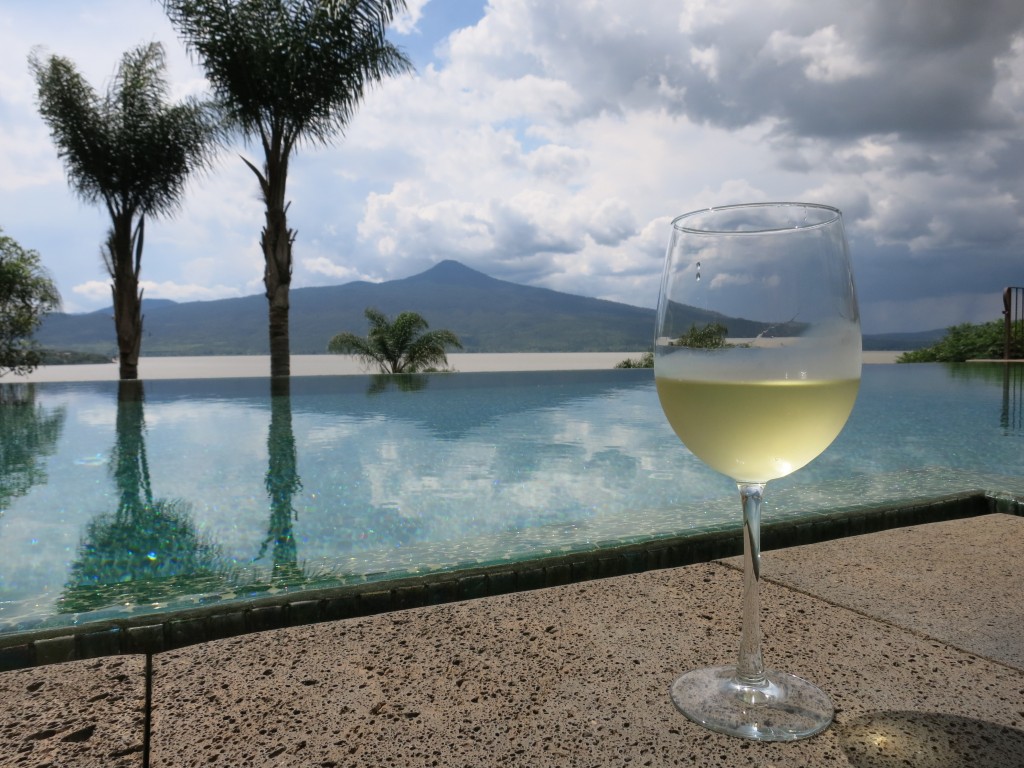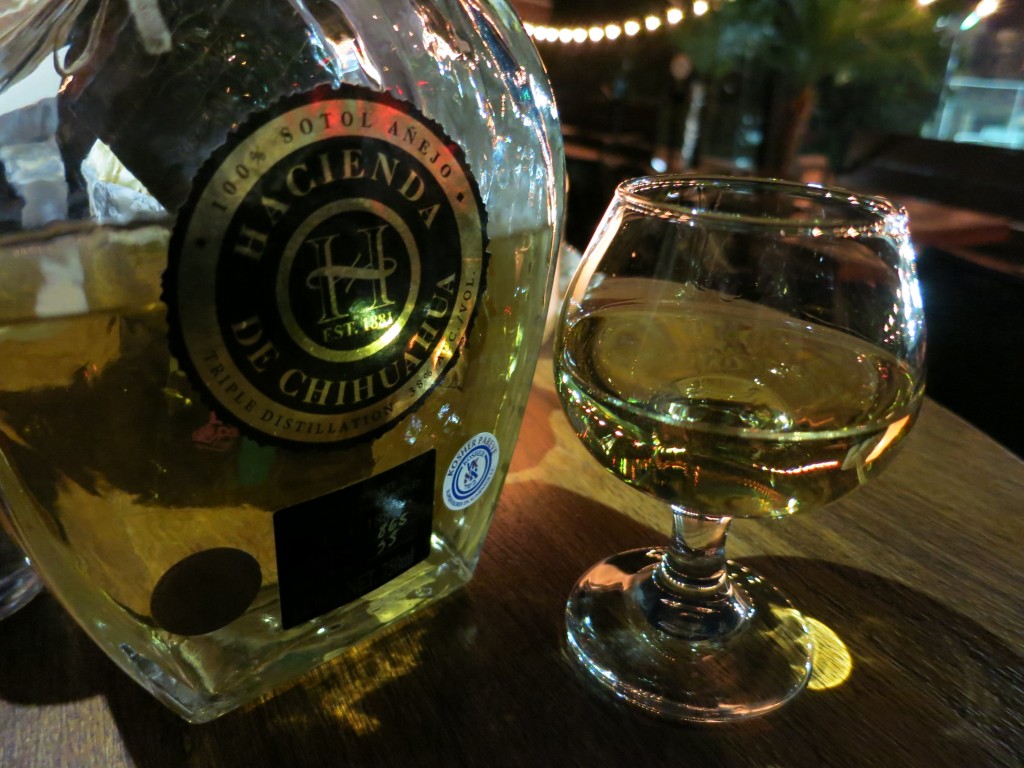Go For Emerald Green
These last lazy days of summer call for a full-bodied but zesty white, lively enough to feel refreshing on a warm night and serious enough to merit a little quiet contemplation. On a trip to Vienna, I discovered just the thing: Grüner Veltliner Smaragd.
Grüner Veltliner, you might justifiably argue, is not exactly a discovery. In the last decade or so, the Austrian variety has become quite popular with sommeliers for its food-friendly acidity and peppery spice, and it’s not at all uncommon nowadays to find examples on wine lists. In fact, I had more or less stopped drinking Grüner in favor of more obscure varieties. It took a little green lizard to get me back.
Austria’s most famous wine region is the Wachau, a surprisingly small region along the Danube west of Vienna. In addition to classifying wines using terms familiar to German Riesling drinkers (Kabinett, Auslese, Spätlese, etc.), the Wachau complicates matters by often substituting its own unique system, as The World Atlas of Wine explains:
Steinfeder is a light wine up to 11.5% alcohol for early drinking. Federspiel is made from slightly riper grapes, 11.5-12.5% alcohol, good in its first five years. Wines labeled Smaragd (after a local green lizard) can be seriously full-bodied, with alcohol levels above — often far above — 12.5%; they repay six or more years’ aging.
Most Grüner Veltliners I see don’t carry any of the above designations, which isn’t a comment on their quality. But if you see a Grüner labeled Smaragd, which literally translates as “emerald,” snap it up. They are harder to find, but they repay the effort. As The Oxford Companion to Wine notes, the Smaragd designation indicates “the most valuable category of white wines made from the ripest grapes on the best sites of the Wachau.”
At vegetarian Tian in Vienna, we ordered a 2012 Tegernseerhof “Bergdistel” Grüner Veltliner Smaragd, which blends grapes from Tegernseerhof’s various vineyards. I knew I would like it as soon as I smelled its enticingly creamy green aroma. It had deliciously creamy fruit on the palate as well, with restrained spice and beautiful balance. It felt very classy, this Grüner, and as many Grüners do, it paired wonderfully with a range of vegetables.
I also found an example at Palmenhaus, a regal café and restaurant occupying what was once the imperial palm house, which has an excellent selection of Austrian wines by the glass. The barrel-vaulted glass roof makes for a gorgeous interior, but the weather was simply too fine to sit indoors. I found a table outside overlooking the leafy Burggarten and settled in with a glass of 2012 Graben Gritsch “Schön” Grüner Veltliner Smaragd. “Schön,” which means pretty, is not an adjective in this case but the name of a vineyard on the far western edge of the Wachau near the town of Spitz.
I loved this wine, which clocks in at a hefty 14.5% alcohol. It had a complex aroma of dried herbs, green fruit and even a hint of smoke. But when I tasted the wine, it burst with rich fruit, leavened by cedar and some focused gingery spice. It felt very decadent and exotic — perfect for sipping outside the palm house of the palace of the Habsburgs.
Tasty Grüner Veltliners are produced in many of Austria’s wine regions — the grape occupies no less than a third of the country’s vineyards. But Grüner Veltliner Smaragd wines are special. Seek them out. They are a worthy pairing with summer’s last few precious days.








